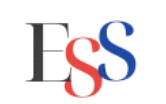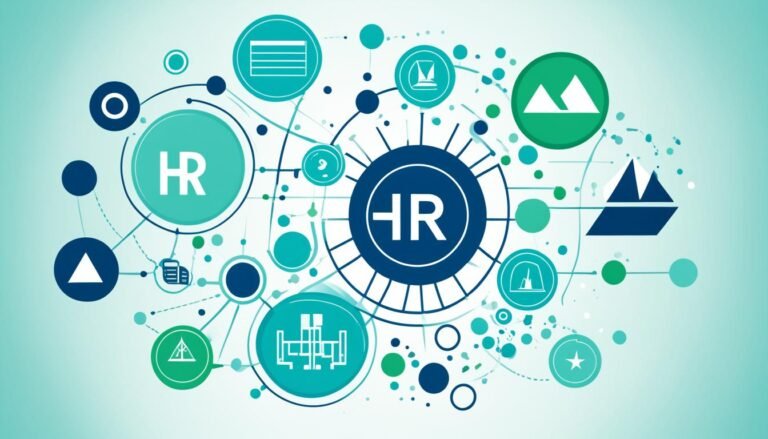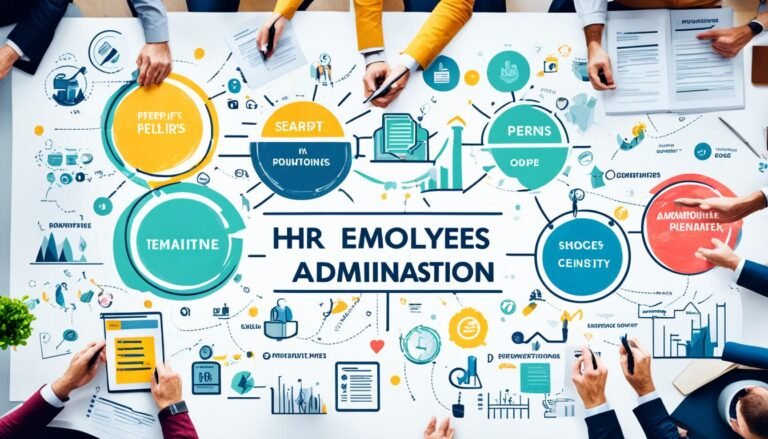A Guide to HR Workforce Analytics
HR workforce analytics, also known as analytics in HR or HR data analysis, is a powerful tool that can provide valuable insights and drive strategic decision-making in human resources. By collecting and interpreting workforce data, organizations can gain workforce data insights that support evidence-based decision-making and lead to better business outcomes.
There are different types of HR analytics methods that can be used to analyze and interpret HR data. These include descriptive analytics, diagnostic analytics, predictive analytics, and prescriptive analytics. Each method offers unique perspectives and can contribute strategically to the organization’s bottom line.
To understand the potential of HR workforce analytics, it’s important to explore what HR analytics is and how it can benefit organizations. By leveraging HR analytics strategies, HR teams can make data-driven decisions, enhance hiring practices, improve employee experience and performance, reduce attrition rates, automate tasks, and gain a centralized view of HR data.
Key Takeaways:
- HR workforce analytics is the collection and interpretation of human resources data to support evidence-based decisions.
- The types of HR analytics methods include descriptive, diagnostic, predictive, and prescriptive analytics.
- HR analytics can enhance hiring practices, improve employee experience and performance, reduce attrition rates, and automate tasks.
- HR analytics provides a centralized view of HR data and enables data-driven decision-making.
- By leveraging HR analytics, organizations can drive better business outcomes and optimize workforce management.
What is HR Analytics?
HR analytics, also known as people analytics, talent analytics, or workforce analytics, is the process of collecting and analyzing human resources data to support decision-making. It correlates HR data to organizational goals and helps HR practitioners contribute more effectively to the business’s bottom line.
By leveraging HR analytics, organizations gain valuable insights into their workforce, enabling them to make data-driven decisions that drive business success. HR analytics empowers HR professionals to understand trends, identify patterns, and predict future outcomes, enabling them to optimize talent management strategies and enhance overall employee experience.
With the help of HR analytics, organizations can address key HR challenges, such as talent acquisition and retention, performance management, employee engagement, and workforce planning. By harnessing the power of data, HR analytics provides a scientific and evidence-based approach to human resource management.
Whether it’s analyzing employee performance, identifying high-potential talent, or determining the impact of HR interventions, HR analytics offers a wealth of actionable insights that can transform HR practices and lead to improved business outcomes.
HR analytics is a strategic approach to HR management that combines data analysis with business strategy, helping organizations unlock the full potential of their workforce and achieve sustainable growth.
The Benefits of HR Analytics
Implementing HR analytics brings numerous benefits to organizations:
- Improved Talent Acquisition: HR analytics enables organizations to identify the most effective recruitment strategies, assess the quality of hires, and predict future hiring needs.
- Enhanced Employee Experience: By analyzing employee feedback, HR analytics helps identify areas for improvement, optimize employee engagement initiatives, and enhance overall employee satisfaction.
- Reduced Attrition Rates: HR analytics allows organizations to identify key factors contributing to employee attrition and develop strategies to retain top talent.
- Data-Driven HR Decisions: With access to real-time HR data and analytics, HR professionals can make informed decisions that align with the organization’s strategic objectives.
In summary, HR analytics is a powerful tool that enables organizations to leverage data to drive better people-related decisions. By using HR analytics, organizations can create a competitive advantage by aligning their workforce strategies with business objectives and achieving optimal business outcomes.
| HR Analytics Use Cases | Benefits |
|---|---|
| Workforce Planning and Optimization | Improved talent allocation and resource management |
| Talent Acquisition and Recruitment | Enhanced candidate selection and improved hiring ROI |
| Performance Management and Employee Development | Enhanced employee performance and career growth |
| Succession Planning | Identification and development of future leaders |
The 4 Types of HR Analytics Explained
In the field of HR analytics, there are four distinct types of analytics that organizations employ to gain valuable insights and make data-driven decisions. These types are descriptive analytics, diagnostic analytics, predictive analytics, and prescriptive analytics.
Descriptive analytics involves analyzing historical data patterns to gain a deeper understanding of past events. By examining past trends and data points, HR professionals can identify patterns and gain insights into historical workforce performance. This type of analytics provides a foundation for further analysis and decision-making.
Diagnostic analytics goes a step further by providing an explanation for the patterns and anomalies observed in the data. It allows HR professionals to dig deeper into why certain events or trends occurred, helping them identify the root causes of workforce challenges or successes. Diagnostic analytics helps organizations uncover valuable insights to optimize HR strategies and improve overall performance.
Predictive analytics takes HR analytics to the next level by forecasting future outcomes based on historical data. By leveraging advanced statistical models and machine learning algorithms, HR professionals can anticipate future workforce trends, such as attrition rates, performance levels, or talent acquisition needs. Predictive analytics enables proactive decision-making, allowing organizations to optimize their workforce planning and stay ahead of the competition.
Prescriptive analytics provides recommendations and actionable insights based on the predictions generated by predictive analytics. It helps HR professionals make informed decisions by suggesting optimal courses of action to achieve desired outcomes. Prescriptive analytics takes into account multiple factors and constraints to provide HR practitioners with a clear roadmap for improving workforce performance and achieving organizational goals.
By leveraging these four types of HR analytics, organizations can gain a comprehensive understanding of their workforce, identify areas for improvement, make data-driven decisions, and ultimately drive better business results.
Benefits of HR Analytics
Implementing HR analytics strategies can provide organizations with a plethora of benefits, empowering them to make data-driven HR decisions and drive better business outcomes. By harnessing the power of talent analytics and HR reporting and analytics, HR professionals can unlock valuable insights and optimize their workforce management practices.
Enhancing Hiring Practices
HR analytics enables companies to optimize their hiring practices by leveraging data-driven insights. By analyzing past hiring patterns and evaluating the performance of successful hires, HR teams can identify the key characteristics and qualifications that lead to successful candidate selection. This data-driven approach to recruitment ensures more effective talent acquisition and reduces the risk of making hiring mistakes, ultimately leading to improved outcomes.
Improving Employee Experience and Performance
Using HR analytics, organizations can gain a deeper understanding of their employees’ experience and performance. By analyzing data on employee satisfaction, engagement levels, and performance metrics, HR professionals can identify areas for improvement and implement targeted strategies to enhance employee experience and productivity. This not only increases employee satisfaction but also positively impacts overall business performance.
Reducing Attrition Rates
HR analytics plays a crucial role in identifying and addressing factors that contribute to high attrition rates. By analyzing relevant data such as employee feedback, turnover rates, and exit interview data, HR teams can uncover patterns and trends associated with employee attrition. Armed with these insights, organizations can develop retention strategies focused on improving employee satisfaction, engagement, and development opportunities, effectively reducing attrition rates and retaining top talent.
Automating Tasks and Streamlining Processes
Through HR analytics, organizations can automate tasks and streamline HR processes, saving valuable time and resources. By analyzing HR data and identifying repetitive and manual tasks that can be automated, HR teams can create more efficient workflows. This allows HR professionals to focus on strategic initiatives that require human expertise and actively contribute to the organization’s growth.
Generating Predictions and Forecasting
HR analytics enables HR professionals to generate predictions and forecasts based on historical data. By analyzing past trends, patterns, and correlations within HR data, HR teams can make more accurate predictions about future workforce needs, skills gaps, and talent availability. These predictions help organizations proactively plan for future challenges and make informed decisions to optimize workforce management strategies.
Having a Centralized View of HR Data
One of the key benefits of HR analytics is the ability to have a centralized view of HR data. By integrating and consolidating data from various HR systems and sources, organizations can gain a holistic view of their workforce and HR processes. This centralized view enables HR professionals to access accurate and up-to-date information, allowing for better-informed decision-making and strategic planning.
Visualizing Data and Sharing Insights
HR reporting and analytics provide organizations with the capability to visualize HR data and share insights across the organization. By using data visualization techniques such as charts, graphs, and dashboards, HR teams can present complex HR data in a visually appealing and easily understandable format. This facilitates effective communication and collaboration, enabling HR insights to be shared with key stakeholders, leaders, and decision-makers across the organization.
HR analytics strategies, driven by talent analytics and HR reporting and analytics, offer a multitude of benefits for organizations. From enhancing hiring practices to improving employee experience and performance, reducing attrition rates, automating tasks, generating predictions, having a centralized view of HR data, visualizing data, and sharing insights, HR professionals can leverage these benefits to drive more effective and efficient HR decisions and achieve improved business outcomes.
HR Analytics Maturity Levels
HR analytics maturity refers to the complexity of data analytics used by HR departments to solve problems. As organizations advance in their HR analytics journey, they progress through different levels of maturity, each representing a higher level of analytics sophistication. The four levels of HR analytics maturity are:
- Operational reporting
- Advanced reporting
- Strategic analytics
- Predictive analytics
Operational reporting is the initial stage of HR analytics maturity. It involves basic data collection and reporting to provide insights into HR operations. Organizations at this level typically rely on operational reports to track HR metrics and key performance indicators.
Advanced reporting builds upon operational reporting by incorporating more sophisticated data analysis techniques. It focuses on identifying trends, patterns, and correlations in HR data to support decision-making. Advanced reporting enables HR professionals to gain deeper insights into workforce trends and performance.
Strategic analytics takes HR analytics to a higher level by aligning HR data with strategic business goals. This level of maturity involves analyzing HR data in the context of the overall organizational strategy. Strategic analytics enables HR professionals to make data-driven recommendations and decisions that drive business outcomes.
Predictive analytics represents the highest level of HR analytics maturity. It leverages advanced statistical models and machine learning algorithms to forecast future outcomes and trends based on historical data. Predictive analytics enables HR professionals to proactively address workforce challenges and optimize talent management strategies.
As organizations progress through these maturity levels, they unlock the full potential of HR analytics and move from simply reporting on HR metrics to using data-driven insights for strategic decision-making.
| HR Analytics Maturity Levels | Description |
|---|---|
| Operational reporting | Basic data collection and reporting to track HR metrics and performance indicators. |
| Advanced reporting | Sophisticated data analysis techniques to identify trends and patterns in HR data. |
| Strategic analytics | Analyzing HR data in the context of organizational strategy to make data-driven recommendations and decisions. |
| Predictive analytics | Using advanced statistical models and machine learning algorithms to forecast future outcomes and optimize talent management strategies. |
How to Get Started with HR Data Analytics
Getting started with HR data analytics is essential for organizations looking to make data-driven decisions and optimize their workforce management. By collecting relevant HR data, utilizing HR analytics software and tools, and visualizing the data through interactive HR dashboards, HR professionals can gain valuable insights and uncover patterns that can drive strategic HR initiatives.
Collect Relevant HR Data
Begin your HR data analytics journey by identifying the key data points that are relevant to your organization’s goals. This may include employee demographics, performance metrics, compensation data, recruitment and retention metrics, and more. Ensuring data accuracy and integrity is crucial for meaningful analysis and informed decision-making.
Utilize HR Analytics Software and Tools
Investing in HR analytics software and tools can streamline the data analysis process and provide comprehensive HR analytics capabilities. These tools enable HR professionals to efficiently aggregate and analyze data, identify trends and patterns, and generate actionable insights. Some popular HR analytics software options include SAP SuccessFactors, Tableau, and Workday.
Visualize Data through Interactive HR Dashboards
Data visualization is a powerful tool for HR analytics. By utilizing interactive HR dashboards, you can present HR data in a visually appealing and easy-to-understand format. Visual representations such as charts, graphs, and infographics help identify trends, patterns, and outliers, enabling HR professionals to communicate insights effectively to stakeholders and make data-driven decisions.
“Data visualization is an important aspect of HR analytics. It allows HR professionals to convey complex information in a clear and concise manner, making it easier for stakeholders to understand and act upon.”
By following these steps, HR professionals can harness the power of HR data analytics to gain valuable insights and optimize workforce management. The ability to make data-driven decisions based on accurate and comprehensive HR data is becoming increasingly important in today’s competitive business landscape.
Implementing HR data analytics practices and visualizing data through interactive HR dashboards enables organizations to uncover hidden patterns, identify areas of improvement, and make data-driven decisions that can positively impact the entire organization.
Challenges of HR Analytics to Overcome
While HR analytics offers numerous benefits, there are also challenges that organizations need to address in order to unlock its full potential. These challenges include:
- Data Quality and Availability: Ensuring that the HR data collected is accurate, reliable, and readily accessible is crucial for effective HR analytics. Organizations must invest in data management systems and processes to maintain data integrity and eliminate inconsistencies.
- Data Privacy and Security Concerns: As HR analytics involves the collection and analysis of sensitive employee data, organizations must prioritize data privacy and security. Implementing robust data protection measures and complying with relevant regulations is essential to maintain confidentiality and build trust with employees.
- Lack of Analytics Skills and Knowledge within HR Teams: HR analytics requires a set of specialized skills and knowledge to effectively analyze and interpret HR data. Organizations need to invest in training and development programs to upskill HR professionals and equip them with the analytical capabilities necessary for data-driven decision-making.
- Resistance to Change: Implementing HR analytics often requires a cultural shift within the organization. Some employees may resist the use of data and analytics in HR decision-making, preferring traditional methods. Organizations must proactively engage and educate employees about the benefits of HR analytics to gain buy-in and drive acceptance.
By addressing these challenges head-on, organizations can harness the power of HR analytics to optimize workforce management, make data-driven decisions, and drive better business outcomes.
Real-World HR Analytics Examples
HR analytics is a powerful tool that can transform talent management practices, enable in-depth analysis of employee performance, and drive data-driven decisions about the workforce. By leveraging HR analytics, organizations can achieve better outcomes and optimize their human resources strategies. Here are some real-world examples of HR analytics in action:
Talent Management Analytics
One example of HR analytics in practice is using talent management analytics to identify top-performing employees and develop effective strategies to attract, engage, and retain talent. By analyzing data such as performance metrics, employee feedback, and learning and development opportunities, organizations can gain valuable insights into their talent pool. These insights can inform targeted recruitment efforts, succession planning, and talent development programs.
Employee Performance Analytics
HR analytics can also be utilized to analyze employee performance and identify areas for improvement. By collecting data on key performance indicators, attendance records, and individual goals, organizations can gain insights into individual and team performance. This information enables HR professionals to develop personalized development plans, provide targeted coaching, and recognize high performers, ultimately driving productivity and success.
Workforce Analytics
Another application of HR analytics is in workforce planning and optimization. By analyzing workforce data, such as demographic information, turnover rates, and employee satisfaction surveys, organizations can gain insights into their workforce composition and make informed decisions about workforce planning, resource allocation, and talent deployment. This data-driven approach helps organizations align their workforce with business objectives and ensure the right people are in the right roles.
By applying HR analytics in these areas, organizations can enhance talent management practices, improve employee performance, and make data-driven decisions to optimize their workforce. The insights gained from HR analytics enable organizations to stay competitive, drive business success, and create a high-performance culture.
Overcoming HR Analytics Challenges
In order to fully harness the potential of HR analytics, organizations need to address the challenges that come with it. By implementing the following solutions, businesses can overcome these obstacles and maximize the benefits of HR analytics:
- Data Quality Improvement: Ensuring that HR data is accurate, consistent, and reliable is crucial for effective analytics. By implementing data quality improvement measures, such as regular data cleansing and validation processes, organizations can enhance the quality of their data and improve the accuracy of their analytics results.
- Analytics Training for HR Teams: Equipping HR teams with the necessary analytics skills and knowledge is essential for leveraging HR analytics effectively. By providing comprehensive analytics training programs, organizations can empower HR professionals to utilize analytics tools and techniques, interpret data insights, and make data-driven decisions.
- Addressing Data Privacy and Security Concerns: As HR data contains sensitive employee information, organizations must prioritize data privacy and security. By implementing robust security measures, such as data encryption, access controls, and compliance with data protection regulations, businesses can ensure the confidentiality and integrity of their HR analytics data.
- Implementing Change Management Strategies: Introducing HR analytics initiatives often requires changes in processes, workflows, and mindset within the organization. By employing change management strategies, such as effective communication, stakeholder involvement, and training programs, businesses can navigate resistance to change and facilitate the successful adoption of HR analytics.
By implementing these HR analytics solutions, organizations can overcome challenges related to data quality, analytics skills, data privacy, and change management. This, in turn, enables businesses to unlock the full potential of HR analytics and drive better decision-making to optimize workforce management.
Key Takeaways and Future of HR Analytics
HR analytics has revolutionized the way organizations approach human resources management. By leveraging data-driven insights, HR professionals can make more informed decisions and drive better business outcomes. As technology continues to advance, the future of HR analytics holds immense potential for further transformation and innovation.
Emerging Trends in HR Analytics
1. Predictive Analytics:
Predictive analytics is expected to play a crucial role in HR analytics. By analyzing historical data, organizations can forecast future trends and make proactive strategic decisions. This enables HR teams to anticipate talent needs, predict attrition rates, and optimize workforce planning.
2. AI and Machine Learning:
The integration of artificial intelligence (AI) and machine learning algorithms will enhance HR analytics capabilities. These technologies can automate data processing, identify patterns, and generate actionable insights. This empowers HR teams to streamline operations, reduce bias, and improve decision accuracy.
3. Employee Experience Analytics:
Employee experience analytics will gain prominence as organizations strive to create positive and engaging workplaces. By analyzing employee feedback, sentiment, and engagement data, HR analytics can provide insights to enhance employee satisfaction, productivity, and retention.
Challenges on the Horizon
1. Ethical Use of Data:
As HR analytics relies on employee data, ensuring ethical data practices and maintaining privacy will be a key challenge. HR professionals must adhere to data protection regulations, establish transparent data governance policies, and prioritize ethics in their analytics strategies.
2. Analytical Skills Gap:
The demand for skilled HR analytics professionals is surpassing the supply. Organizations need to invest in upskilling their HR teams, fostering a data-driven culture, and attracting analytics talent to bridge the analytical skills gap and maximize the potential of HR analytics.
The Future of HR Analytics
The future of HR analytics holds immense promise for organizations willing to embrace technological advancements and data-driven decision-making. By leveraging emerging trends and addressing challenges, HR analytics will continue to revolutionize HR practices and contribute strategically to business success.
“HR analytics is poised to become an integral part of HR teams’ decision-making processes, enabling organizations to optimize their talent management strategies, drive efficiency, and unlock the full potential of their workforce.” – John Smith, HR Analytics Expert
As the role of HR continues to evolve, HR analytics will play a crucial role in shaping the future of work, empowering organizations to adapt to changing workforce dynamics, make informed decisions, and drive sustainable growth.
Conclusion
HR analytics is a powerful tool that enables HR professionals to optimize workforce management and make data-driven decisions. By leveraging the different types of HR analytics, organizations can gain valuable insights into their workforce and transform their talent strategies, ultimately driving business success.
Through descriptive analytics, organizations can analyze past data patterns and understand historical workforce trends. Diagnostic analytics goes further by providing explanations for these patterns, helping organizations identify the root causes of workforce challenges. Utilizing predictive analytics, organizations can forecast future outcomes based on historical data, enabling them to proactively address potential issues and seize opportunities. Moreover, prescriptive analytics offers recommendations and actions to aid HR professionals in optimizing talent strategies and making informed decisions.
While HR analytics presents numerous benefits, organizations may encounter challenges such as data quality and availability, privacy concerns, and a lack of analytics skills within HR teams. However, these challenges can be overcome by investing in data quality improvement initiatives, establishing robust data privacy policies, providing analytics training, and implementing change management strategies.
Looking ahead, the future of HR analytics holds great potential. By staying abreast of HR analytics trends and continuously enhancing data analytics capabilities, organizations can unlock the full potential of HR analytics and drive better business outcomes. With HR analytics, organizations can harness the power of data to create a strategic advantage, effectively manage their workforce, and make well-informed decisions that positively impact their bottom line.







